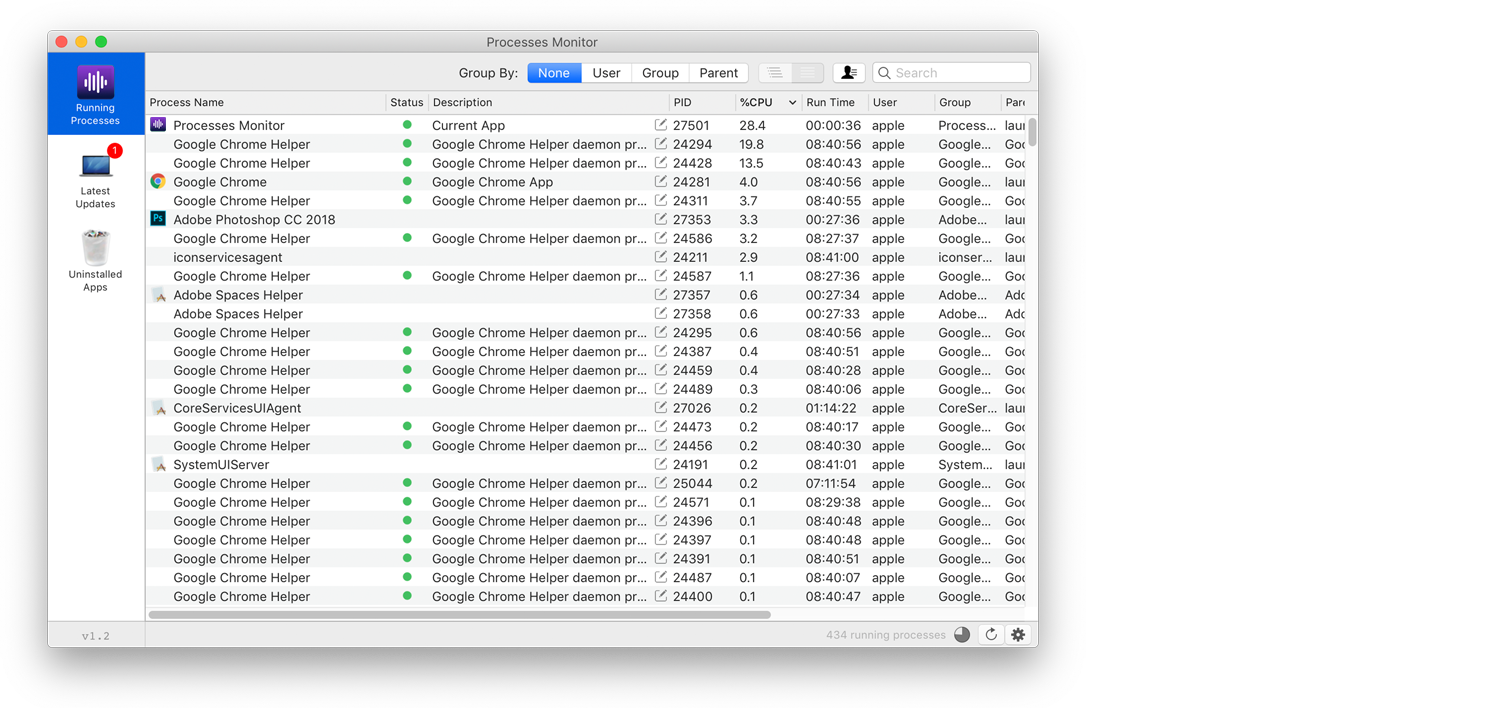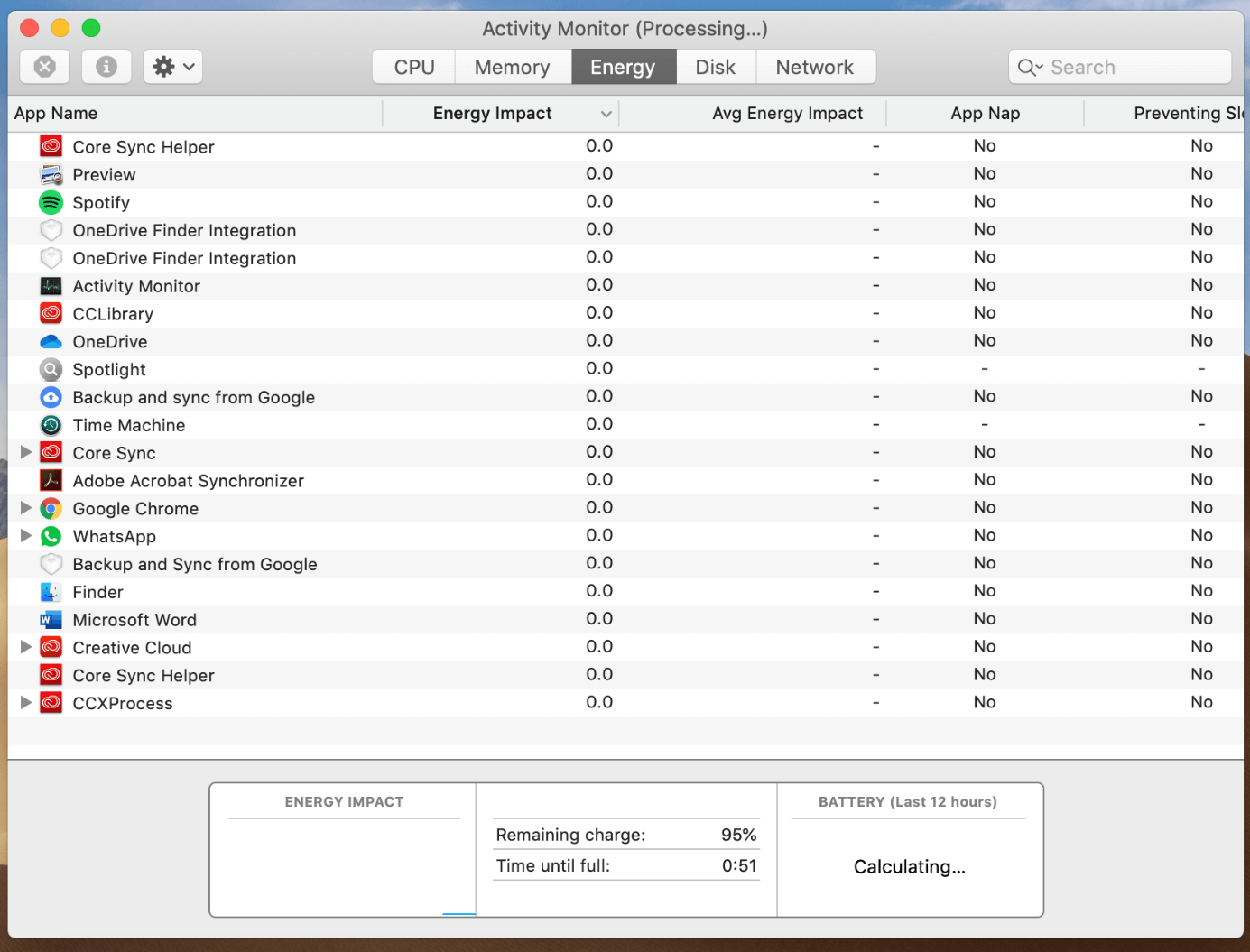

The Network screen shows how much network bandwidth an app is using. At the bottom section, you can see the data read/written speed for every second. This tab reveals how much data is being written to and read from your Mac's drives. The bottom of the screen displays the overall energy impact and the battery charge. And 12 hr Power column shows which apps use the most power over the past twelve hours, including the time when your Mac was asleep. The Energy tab tells apps and processes that drain your battery and the energy used by each app or program. The Swap Used data can tell you if your Mac is copying too much data between physical memory and your hard drive's swap file (virtual memory files that are written to your Mac's disk).

The bottom section gives the total and used amount of memory on your Mac. RAM is directly responsible for the speed of your Mac. This tab reflects how much RAM every process is taking up. You can use Mac Activity Monitor to quit them forcibly. Normally, they're unresponsive programs still running behind the scene. This tab lets you know which programs are working the hardest.įor example, the fan on your MacBook becomes loud, or you see the battery is draining quickly, check the CPU tab to see which apps are taxing the processor. The CPU tab lists all the processes that are currently taking up your Mac's CPU (such as AppSSOAgent) and demonstrates how long they have been running.

At the top center of the window, click on any of these tabs, you'll get detailed information about it. When you launch Activity Monitor, you'll find 5 tabs: CPU, Memory, Energy, Disk, and Network, which means it monitors activities of your MacBook mainly from the 5 aspects. And this is also the reason why Mac Activity Monitor is also known as the Mac Task Manager. It tells what your MacBook is doing behind the scene, just like the Windows Task Manager does. Force quit programs via Activity MonitorĪctivity Monitor is a built-in macOS app to monitor Mac activity in real-time. And this post will tell you what Activity Monitor is and how to use it. Have you ever suffered this annoying situation on your Mac - one of the apps or programs becomes unresponsive and it stops your Mac from continuing working? To solve this frustrating problem, you can use Mac Activity Monitor for help.


 0 kommentar(er)
0 kommentar(er)
